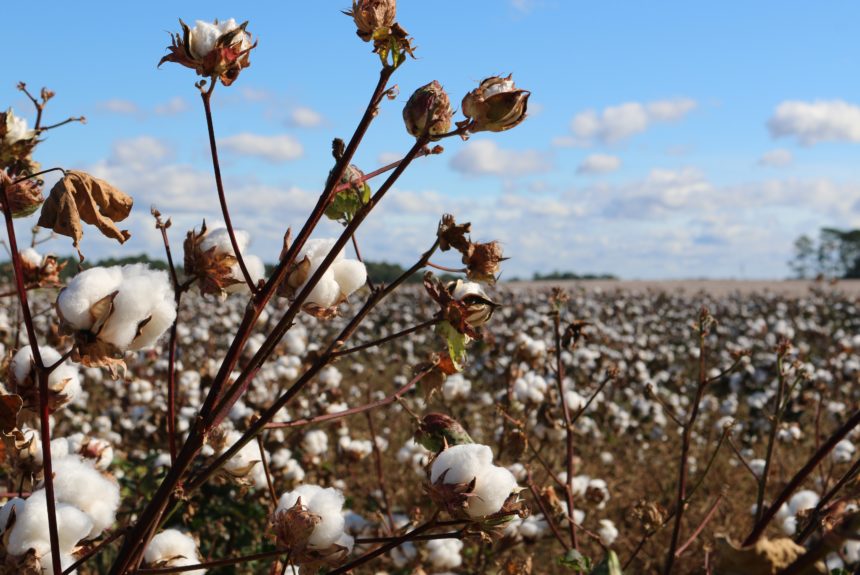By Nathalie Voit
The fashion industry may be late to the sustainable behavior party, but a new model of farming is taking over the fashion world. Brands from North Face and Patagonia to luxury group Kering (owner of iconic luxury brands Gucci and Balenciaga) are now helping convert millions of hectares of conventional farmland over to regenerative agriculture. So what is this new model of sustainable agriculture called “regenerative farming?”
The term originates from farming practices that regenerate the health of the soil. While traditional farming typically uses conventional methods like deep tilling and the cultivation of a singular crop in a field, regenerative farming capitalizes on more sustainable methods such as carbon sequestration and the cultivation of multiple crops in a field, also known as intercropping.
The evidence that these techniques benefit the earth’s soil is extraordinary. Instead of using harmful chemicals and pesticides, strategically placed crops serve as “trap crops” to divert pests. “Cover crops” like crimson clover shade the soil and absorb water. “Pollinator strips” made up of flowering plants are interspersed alongside “hero crops” to attract pollinator insects to the area. Legumes like peas and beans are added for their carbon sequestering powers, helping to pull carbon from the atmosphere.
The abundance of flora and fauna found in regenerative farming plots pays tribute to the earth’s natural state. The effects on the soil are the inverse of those recorded in your standard industrial farm. Whereas traditional farming methods can leave behind leached and barren farmland, regenerative farming practices restorative health to the soil.
Regenerative agriculture captures carbon from the atmosphere as part of the earth’s natural cycle. This cycle enables the familiar process of photosynthesis to be optimized, generating abundant nutrition for earth-dwelling microorganisms and fungi. All these necessary functions are inhibited when soil conditions are so poor that plants cease to absorb atmospheric carbon. Regenerative farming ensures the continuation of the earth’s natural cleansing process. The effect? Stronger and more resistant crop yields.
This practice is immersed in an attitude of sustainability. A commitment to the land is elevated above all else – and is key to regenerative farming’s long-term yields. Short-term certainty of single-crop yields is traded for a medley of crops–each with its own unique design and environmental function. The novel approach to agriculture symbolizes humanity’s increasing commitment to sustainable climate solutions.
The practice has the potential to drastically reduce levels of atmospheric CO2. According to Rebecca Burgess, founder of non-profit regenerative textile systems Fibershed, “Soil has lost 139 billion tons of CO2e through tillage, overgrazing, and churning it up to develop urban and suburban sprawl. Of the available landmass that is not picked over, we have the ability to sink all of the carbon in our atmosphere, which is 109 billion tons. So we actually owe the soil more carbon than we need to sequester.”
In other words, the practice may even be more doable than reducing carbon emissions via fancy carbon-capturing technology or other advanced inventions in the making–since the soil has lost more carbon than we would need to sequester in the first place. This renders the concept of regenerative farming even stronger when compared to alternatives. Cotton, after all, is a staple product in shirts and jeans, but the large cotton fields necessary to generate the raw materials for the fashion industry are a big contributor to heat-trapping greenhouse gases.
The caveat? Brands need to invest significant energy and money into these farms since regenerative farming by nature takes multiple years to become profitable. That will require a significant shift in the mindset of the fashion industry; namely one in which long-term sustainability is placed above the allure of short-term profit. It will also require a collective reappraisal by everyday consumers of how they approach fashion; namely one which places sustainability and worker well-being above the cheap and immediate gratification of “fast fashion.”
Brands like Patagonia have taken the leap. The brand debuted organic cotton in the early 1990s and recently released their first regeneratively sourced collection of t-shirts made from organic cotton farms in India. “When we realized the power of soil sequestering carbon from the atmosphere, it was a real aha! moment,” said VP of Sportswear Patagonia, Helena Barbour. “It’s very dramatic to find something that doesn’t just mitigate a problem, or reduce the impact of a problem, but it actually does something good.” The brand has already partnered with hundreds of farmers, many living in India, to continue their commitment to regenerative sportswear.
“We had the chance to travel to India to see these regenerative farms, and they’re little paradises,” she says. “They’re very biodiverse, they use beneficial insects, they have animals living on the farm… Just standing there and looking around at the birds and insects and dozens and dozens of varieties of crops was deeply moving, I have to say.”
Not only is fashion at a tipping point in sustainability (the industry is one of the last to incorporate the sustainable practices now standard in other industries), but regenerative farming has the real potential to transform the fashion industry for its own sake. It’s a win-win for farmers, the earth, and fashionistas alike.
Nathalie Voit is a freelance content creator and a graduate of the University of Florida. She is an alumni of The Heritage Foundation’s Young Leaders Program.
The views and opinions expressed are those of the author’s and do not necessarily reflect the official policy or position of C3.
